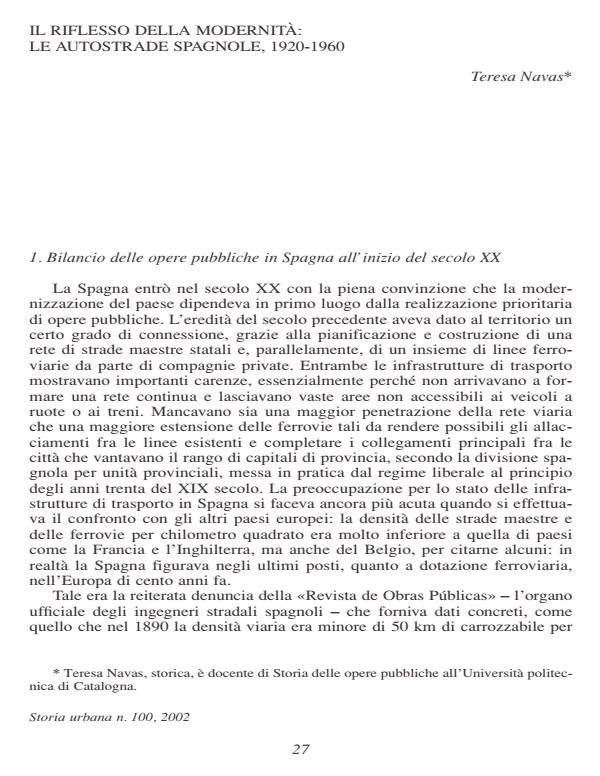Il riflesso della modernità: le autostrade spagnole, 1920-1960
Journal title STORIA URBANA
Author/s Teresa Navas
Publishing Year 2003 Issue 2002/100
Language Italian Pages 28 P. File size 526 KB
DOI
DOI is like a bar code for intellectual property: to have more infomation
click here
Below, you can see the article first page
If you want to buy this article in PDF format, you can do it, following the instructions to buy download credits

FrancoAngeli is member of Publishers International Linking Association, Inc (PILA), a not-for-profit association which run the CrossRef service enabling links to and from online scholarly content.
Spain crossed the threshold of the twentieth century with the clear conviction that the modernisation of the territory by means of public works was a pending issue. The basic road network had by then been planned, though construction was not yet complete, and local networks were still lacking. The railways did not provide full coverage as regards either connectivity or service, and hydraulic works were seen as being essential to the positive exploitation of territorial resources. At the same time, new patterns of mobility were emerging, giving rise to a considerable increase in the number of goods and persons being transported, along with the evolution and integration of the automobile, which rapidly replaced traditional collective means of passenger transport. As a result, it became necessary to extend overland communication networks as well as modernize them in accordance with this new mobility. The response was divided between decisive action on the existing road system and projects for the first motorways that were formulated in the late twenties, though not actually constructed until forty years later.
Teresa Navas, Il riflesso della modernità: le autostrade spagnole, 1920-1960 in "STORIA URBANA " 100/2002, pp , DOI: